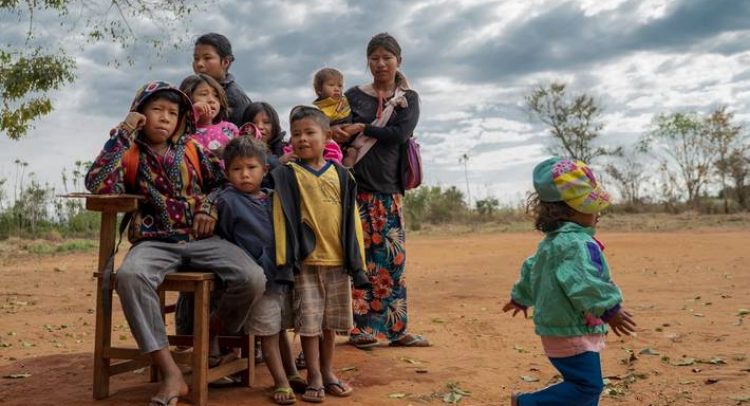SANTIAGO, Chile — A new United Nations report released here Wednesday shows the territorial inequality of malnutrition in Latin America and the Caribbean.
The report titled “Regional Overview of Food and Nutrition Security in Latin America and the Caribbean 2020,” analyses child overweight and stunting in the countries of the region, and identifies which territories are highly lagging, that is, those that exhibit levels significantly higher than the national averages.
According to the report, overweight children in the highly lagging territories of the region is twice as high as in the territories with no lag, estimated at 13.1 percent. Stunting, meanwhile, reaches 27.6 percent in the territories which are highly lagging, and only 11.9 percent in those with no lag.
“National averages hide territorial inequalities. In each country, we have places that have reached very good standards, and others where conditions are very deleterious. It is essential that countries focus their efforts and channel resources towards their lagging territories, with solutions tailored to each one of them,” said Julio Berdegué, the regional representative for the Food and Agriculture Organization (FAO).
One out of every five territories analyzed is lagging behind in both stunting and overweight children. These territories are usually rural, with high levels of poverty and a high presence of indigenous and Afro-descendant populations.
“The panorama confirms the urgent need to invest in rural areas and in family farming. First, because rural areas and populations are the most affected by the problems of malnutrition, and second because for this region, where the cost of a healthy diet is the highest in the world, it is key to promote food systems that favor access to nutritious, diverse and affordable food, which can only be done by supporting family farming”, said Rossana Polastri, the International Fund for Agricultural Development director for Latin America and the Caribbean.
The report is a joint publication of the FAO, IFAD, the Pan American Health Organization / World Health Organization; the United Nations Children’s Fund, and the United Nations World Food Program (WFP).
“This report confirms the need for the governments of the region to expand their existing social protection networks and increase social spending so their benefits reach the most vulnerable people affected by food insecurity during the pandemic,” said Miguel Barreto, WFP regional director for Latin America and the Caribbean.
According to the report, in 23 countries there are 142 territories in which stunting is significantly higher than the national average: the difference between the highly lagging and non-lagging territories reaches 48 percentage points in Panama and 34 in Guatemala and is particularly marked in Belize, Colombia, Guyana, and Honduras.
Stunting is disproportionately high in rural territories, with less access to services, predominantly informal labor markets, with high levels of poverty and low levels of schooling.
The report notes that overweight in children under five affected 7.5 percent of the region’s child population in 2019, above the world average of 5.6 percent.
It identified 141 territories lagging behind with regard to child overweight in 22 countries in the region and highlights that this phenomenon affects large cities and the capitals of each country more severely, unlike what happens with stunting, which occurs more in rural areas.
The countries with the largest differences between their territories which are highly lagging and those with no lag are Jamaica (17.5 percentage points), Guyana (14.7 percentage points), Panama (14 percentage points), Bolivia (12.7 percentage points), and Peru (10 percentage points).
The report highlights that the impact of the pandemic occurs at a time when regional food security was already in clear deterioration.
Last year, 47.7 million people, or 7.4 percent of the population, lived with hunger, an increase of more than 13 million in the last five years alone. Further, more than 190 million people lived in moderate or severe food insecurity, which implies that one in three inhabitants of Latin America did not have access to sufficient and nutritious food in 2019.
“In Latin America and the Caribbean, the strong economic blow of the pandemic has left millions of families with fewer resources to buy nutritious food,” said Jean Gough, UNICEF regional director for Latin America and the Caribbean.
“Not receiving a healthy diet between the ages of six months and two years puts children at risk of malnutrition. In order for them to grow healthy in times of the pandemic, it is urgent to ensure the availability of healthy food at affordable prices.”
The new report also warns about the increase in overweight and obesity, which has occurred in all age groups.
In 2016, at least 315 million people — almost half of the region’s population- were overweight and obese, compared to 239 million in 2006. This is particularly serious due to the evidence that obesity is associated with the risk of suffering worse effects in the event of a COVID-19 infection.
“The uneven distribution of resources and opportunities is leaving many people behind and COVID-19 is projected to increase all forms of childhood malnutrition, including stunting, micronutrient deficiencies, and overweight and obesity,” said Anselm Hennis, Director of the PAHO/WHO Department of Non-communicable Diseases and Mental Health.
“It is necessary to reform food and nutrition systems, and provide populations with optimal nutrition,” he added



